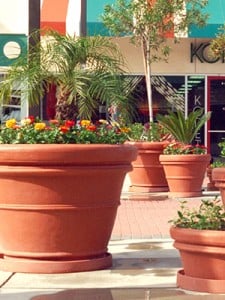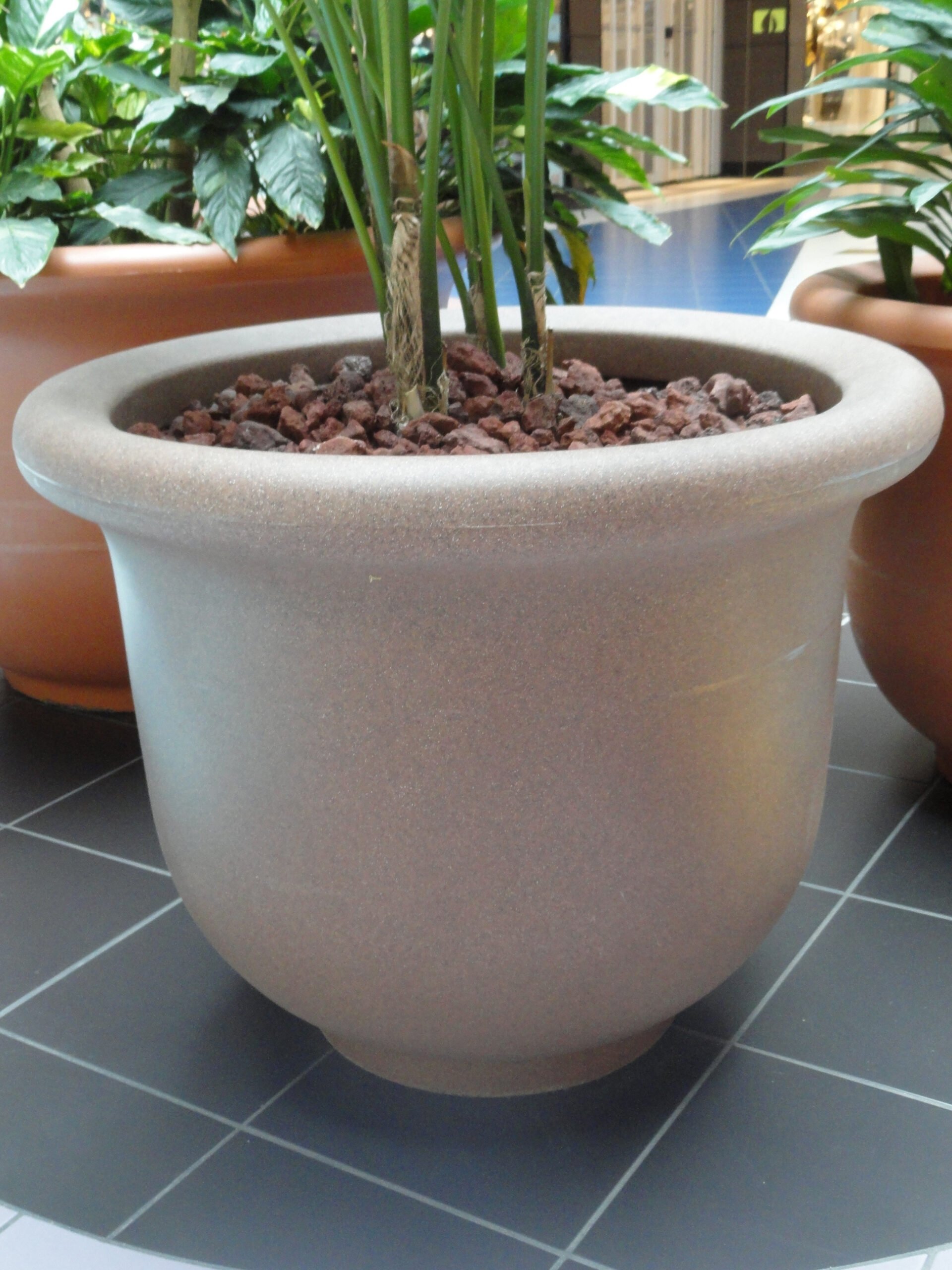Large planters can be one of your very best friends when it comes to landscaping any yard, business or public space, but you’ve got to know how to handle them. Here are answers to some of the most commonly asked questions about large planters.
Maybe you have poor soil, too much concrete, or you need a higher focal point for landscaping, there are endless reasons large planters are so popular. Plus, plants love larger containers because of the extra space they have to stretch out and grow their roots as long as they please.
How Many Flowers Per Large Pot? How To Design Large Planters
Perhaps one of the trickiest things is planting a large planter with the appropriate amount of plants so that it doesn’t look too crowded or too sparse. When you first put your plants in the pot there should be soil showing in between the different plants. This ensures that the plants and their roots have enough space to grow. If everything is full from day one everything will start to tangle together, stumping growth. Over packing plants into a planter will also increase the risk for poor plant growth and disease.
But how many plants should you put in a large planter exactly? There are a number of popular combinations depending on how large the planter is. As a rule of thumb, smaller large planters should contain between 2 or 3 plants, and XL planters can handle between 5 and 8 plants.
No matter how many plants you use, the most important thing is that all plants are compatible and require the same sun, water and soil needs.
What Type Of Large Planter Is Right For Me?
There are many different types of planters, but the easiest option for large planters is self-watering. A huge planter is going to require a lot of water, especially if the plants inside prefer moist soil. As a result of consistent watering it is very likely for water to build up at the bottom of a traditional planter and create a mold-infested environment detrimental to the health of your plants. Self-watering planters store the water separately from the roots in a chamber located at the bottom of the pot. This allows plant feeder roots to reach down and get water as needed but prevents roots from soaking in it 24/7.
TerraCast self-watering planters come in every shape, color, style and size you can imagine, plus every product can be personalized with your logo, or anything else you want.
 How Much Soil Do I Need?
How Much Soil Do I Need?
Using high quality soil is important but it also comes with a price tag. There’s no need to waste it filling your entire planter top to bottom with soil. By filling up an entire large planter with soil you make it much heavier than it needs to be. Fill the bottom portion of your planter with recycled materials like soil bags or empty six packs, place a mesh filter on top and then fill the rest of the pot up with soil. (Reference)
Can You Use Large Planters In Bulk?
You can use as many pots as you’d like, even in one area. Pots can be grouped together, some larger and some smaller. Don’t be afraid of mixing and matching colors, sizes, or shapes. You can also go for a more uniform look by using rows of identical planters. The choice is up to you based upon the overall style of your landscaping.
Large planters can change the overall look of a space, indoor or out. You can get really creative and use large planters to stand as barriers, focal points and gathering spaces. Planters make ideal borders, for instance if you have a sitting area that you’d like to separate from the rest of your yard all you need are some tall and/or wide rows of planters to do the trick. (Reference)
How Often Do Large Planters Need Water?
Large pots are the most susceptible to over watering because there is so much more soil and it takes longer for it to dry out. Constantly moist soil is good for some plants but terrible for others. Although, no plant wants soil that is too moist all of the time or else it becomes prone to bacteria and other issues.
When deciding whether your planter needs watering or not, don’t judge by the top layer of soil alone. Instead, stick your finger deep in the soil to see what it is like beneath the surface, this will give you a good idea if the soil is dry anywhere but the top layer. Once you feel the soil deeper down starting to dry up, it’s definitely time to water again.
What About Fertilizers?
Fertilizers can make the difference between meh plants and wow plants. You want to slowly add fertilizer to the soil of your plants about 6 weeks to 2 months after first planting them. If you prefer to skip the slow-release fertilizer you can always start with a water-soluble fertilizer applied once a week. (Reference)
What Are The Most Important Qualities Of Large Planters?
The two most important qualities of any large planter are that it is durable and lightweight. Sometimes durability translates to really heavy, but you don’t want one or the other, you need both. Once you add soil, water and plants to an already heavy pot you are going to have troubles moving it in the future. If you live somewhere with extreme temperatures and move potted plants in the winter this will be especially irritating. A flimsy lightweight planter isn’t any better because it won’t be able to stand up to the elements.
TerraCast Products specially formulated resin planters are lightweight as well as the most durable planters on the market, and we’ve got a warranty to prove it.

